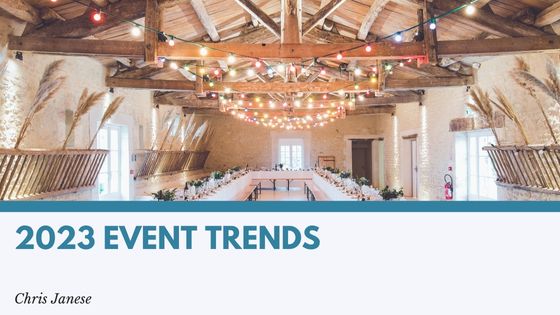In-person events have started to gain popularity, and as events become more digitally integrated, there are now exciting new ways to increase attendee involvement. Other trends are impeding the size and frequency of in-person events, such as growing prices and pervasive workforce shortages. Despite this, there is still a rising demand for event planning.
Efficiency
Due to rising inflation, strong demand, and event expenses, organizations will have to spend more on events. The cost-per-attendee for 2023 meetings and events is predicted to be over 30% more than in 2019. Businesses will strongly emphasize identifying cost reductions and efficiency as a possible recession looms. Limiting expenses will also pressure event organizers to provide event ROI.
Location
Live events are returning at an unprecedented rate. As a result, increased venue demand is creating more competition for available event space. The hunt for appropriate, high-quality venues is made more complicated by rising expenses and persistent staffing shortages. Early preparation is essential in 2023 to find premier locations. Venue sourcing technology is essential to stay current with the competition.
Technology
Due to the quick shift to virtual events during the pandemic, the digitization of events was substantially expedited, and in-person events in the future will be very different from 2019. Technology-enabled in-person events will have more digital touchpoints. To provide more individualized attendee experiences, event marketers and planners will use technology to gather more insightful data on attendee behavior and interests and prolong event engagement beyond its customary start and finish dates. This will enable year-round, perpetual attendee involvement. Event planners will transform the effectiveness of their events into quantitative, measurable results that can be communicated with stakeholders and decision-makers.
Maintaining a healthy corporate culture depends on connecting, educating, and inspiring fellow employees. Many offices are now scattered due to the pandemic. Hybrid workers and virtual engagement will continue to exist. Since many employees increasingly see hybrid as the norm, businesses that wish to attract and keep talent must support flexible working arrangements.
Sustainability
Everyone has sustainability at the front of their minds. In one poll, 80% of participants said their company considers sustainability when scheduling meetings and activities. Out of this, 76% have implemented a sustainable meeting program approach. However, more than half of event organizers consider sustainability a concern for their companies. Event planners will want to concentrate on assessing and reporting on the carbon impact of their events by looking at things like catering, electricity use, and delegating travel distance.
